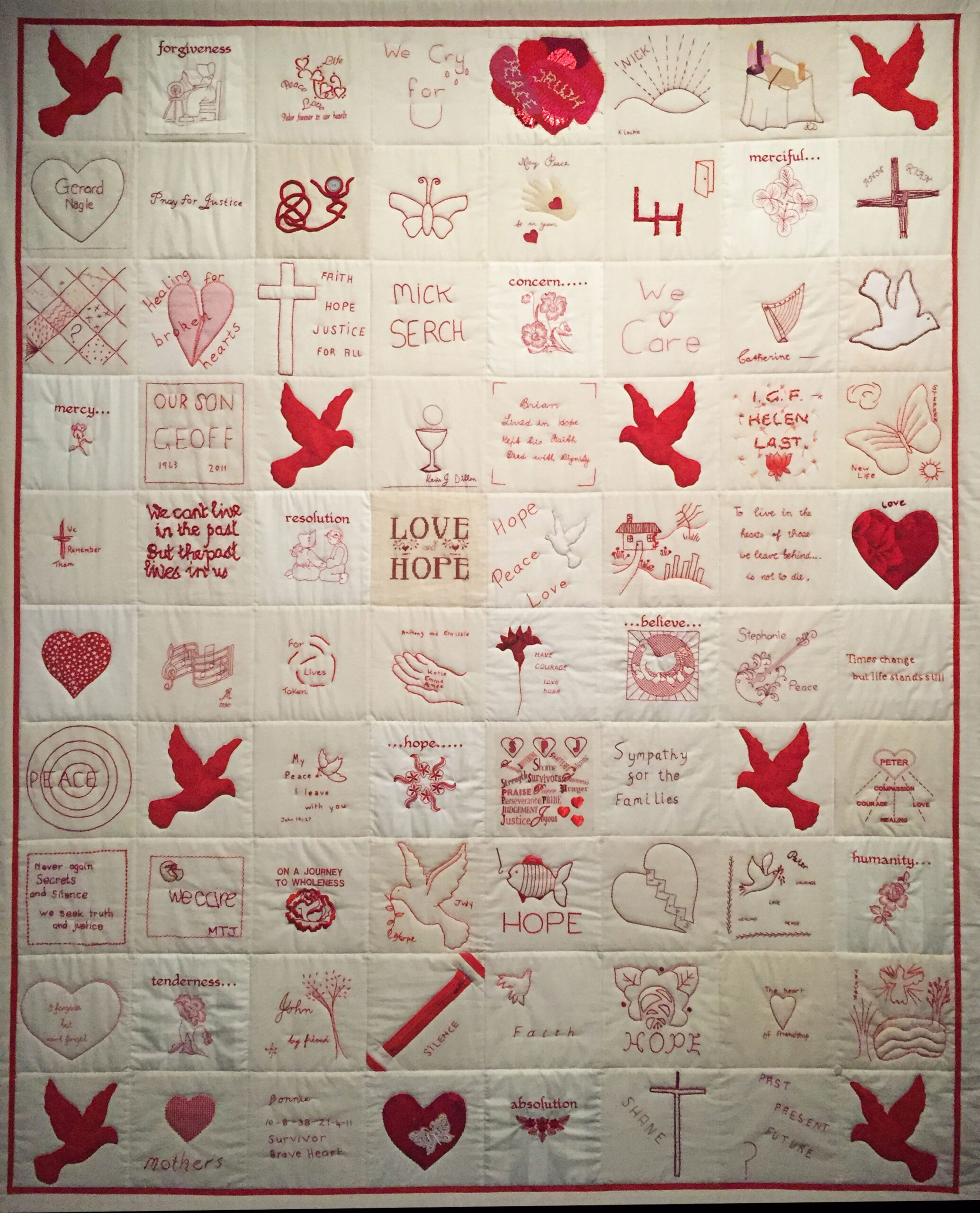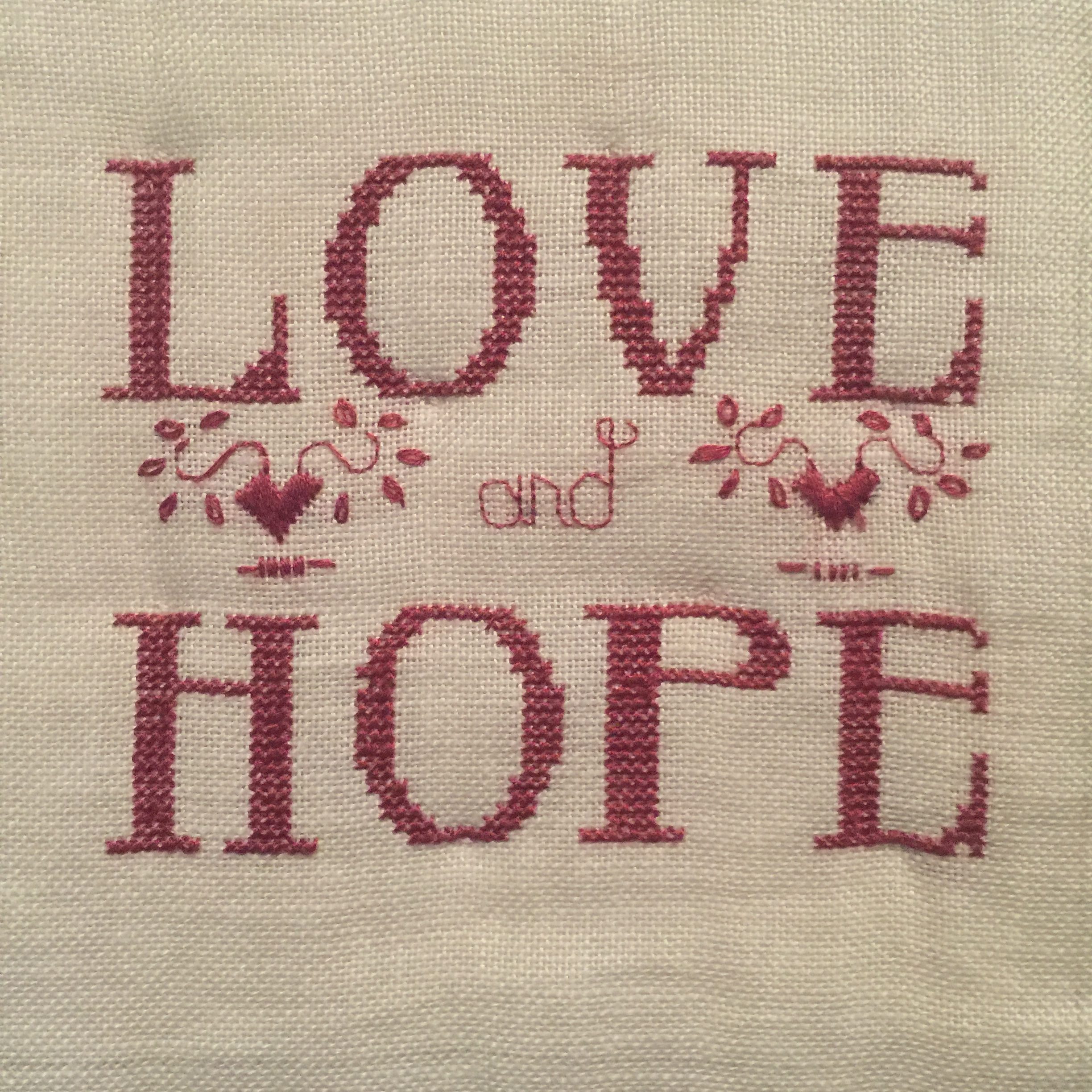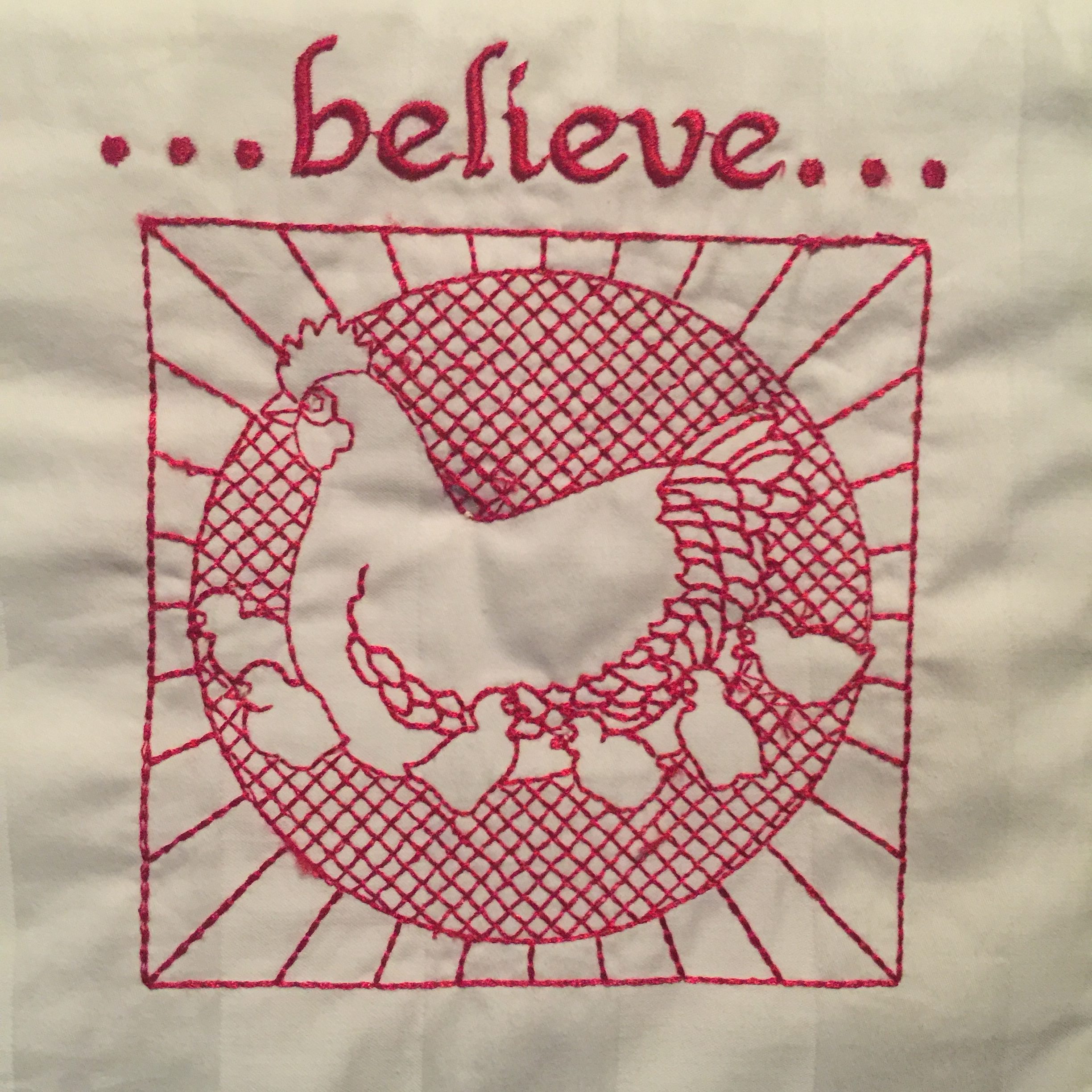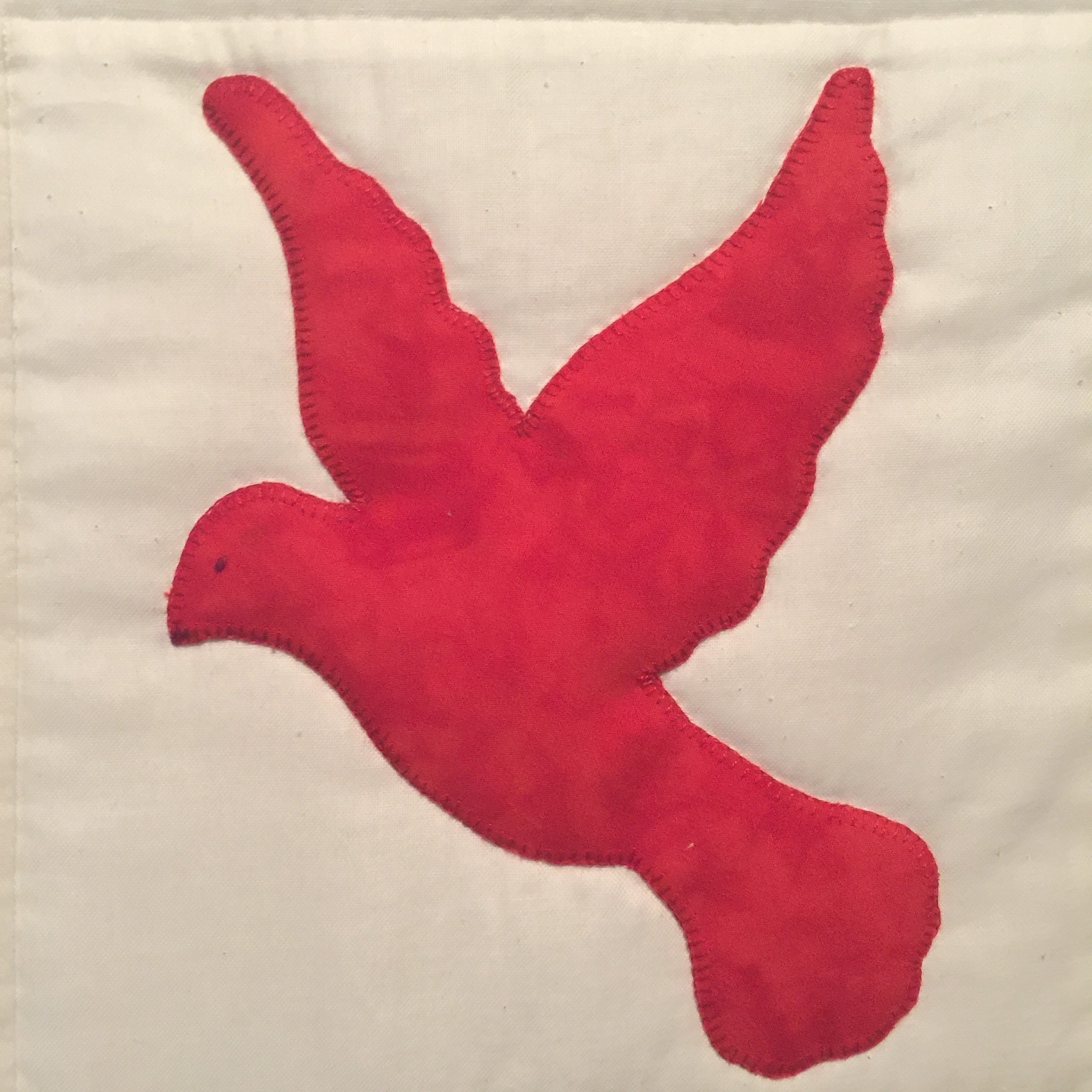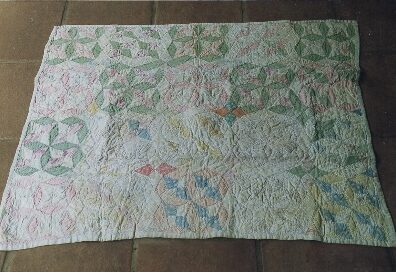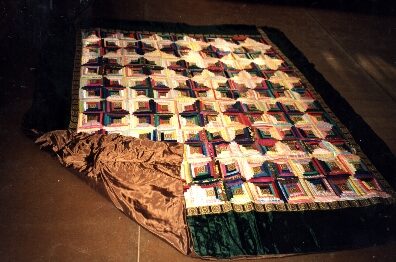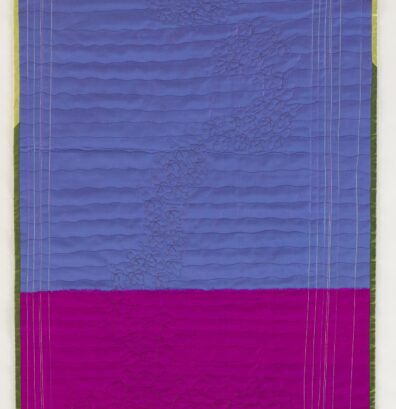-
Owner:
Museum of Australian Democracy -
Location:
Eureka VIC Australia -
Maker:
Beryl Andersen, Carmel Moloney and 80 contributors -
Pattern:
Community -
Pattern:
Embroidered -
Pattern:
Appliqué -
Pattern:
Patchwork -
Pattern:
Signature -
Dimensions:
Height: 180
Width: 180
History
The Quilt of Hope : a living memorial for victims of institutional sexual abuse.
The Quilt of Hope was developed as a response to the many revelations of church-related sexual abuse of children that began to come to public notice in 2010. A small group of Catholic parishioners from the Ballarat region in Victoria began to look for ways to reach out to the survivors, families and communities affected. These likeminded women formed the advocacy group Moving Toward Justice Inc (MTJI) in 2010 and created the callout:
“Can we, together, in constructing the Quilt of Hope, be the glue for each other as we seek the justice and care that is your due?”
The quilt, devised by Carmel Moloney, designed and created by Beryl Andersen, was sewn by many volunteers as a community collaboration. It represents men and women abused as children, advocates who have spoken up and suffered the consequences of challenging a powerful institution, suicides, families whose lives have changed forever, and symbolizes the voices of those who care.
Each element is carefully conceptually considered. The imagery and text are made of red threads on cream calico. This is a traditional remembrance style. During the World War I, medical supplies and parcels were delivered to troops wrapped in cream calico. Soldiers wrote names of their mates and those injured and killed on the calico and kept them as memento mori. Women later embroidered over these names in red thread. Psychologist Mary Darcy described the many thousands of small stitches that make up the Quilt of Hope as being insignificant in themselves but a powerful symbol bringing not only the quilt but its makers and the lives it represents, together into one story.
MTJI recently donated the quilt to M.A.D.E where it resides in the permanent collection. The quilt has and will continue to tour regional parishes and this provides fruitful ground for collecting stories and promoting ongoing advocacy for justice as the first step in healing.
M.A.D.E recognises the importance and power of the quilt as a grassroots democratic symbol in light of the historical ongoing inquest into the issues it addresses, and the potential for its messages to reach huge audiences. It relates strongly to the Eureka Flag, conceived and made by those in Ballarat who believe in standing up for their rights and fighting injustice.
Art has the power to heal great atrocities, educate new generations about impact and avoidance and act as memorials for those who suffered. Art as a conduit for this process is evidenced by initiatives in post-Holocaust Germany including Documenta held every five years in Kassel.
Description
80 hand and machine stitched square calico panels individually embellished with text and motifs using red thread, appliqué techniques, cross stitching, embroidery and application of readymade objects such as buttons, cord, zippers. The squares are hand stitched together and machine stitched to a calico backing with synthetic wading in between the surface layers. Rod pockets along the top and bottom edges of the reverse allow for the insertion of curtain rods or dowel to display the quilt and provide weight at the bottom for stability.
Contact details for the quilt makers are on the back of the quilt in red marker.
Materials include calico, thread, zippers and buttons, synthetic wadding, curtain rod, dowel, calico protective sleeve and PVC roll.
1880 x 1880 mm
Acknowledgements
Moving Towards Justice Inc. (MTJI)
